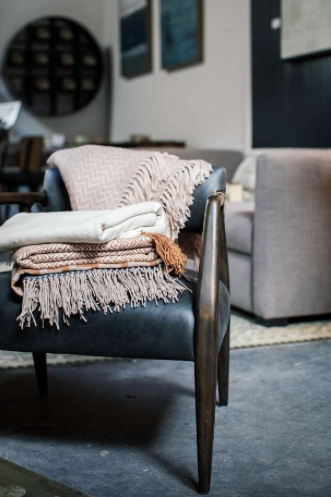Originally published in the San Francisco Chronicle
Denmark this year topped the United Nations’ World Happiness Report, which measures well-being across 156 countries, and the reasons why run the gamut: a healthy economy (including a narrow wealth gap), social programs like free health care, education and subsidized child care and a little thing the Danes like to call hygge. Pronounced “HOO-ga” or “HUE-ga,” it’s the Danish word for all things warm and fuzzy: sitting by the fire with a cup of hot cocoa and a woolly blanket, savoring a homemade meal with your favorite people, spending a cozy weekend in Tahoe with your love. Essentially, it’s whatever brings you peace, gratitude and happiness. (The U.S. ranked 13th in the report.)
“I see it as the pursuit of everyday happiness,” says Meik Wiking, author of “The Little Book of Hygge,” due out this month, and the CEO of the Happiness Research Institute in Copenhagen (his TED Talk explores the darker side of happiness). “Hygge is trying to build in elements of simple pleasures, relaxation, comfort, gratitude and togetherness on a daily basis.”
There is no one definition for hygge, or its adjective cousin hyggelig, and it’s notably difficult to translate, but it’s something anyone can embrace in any language. In fact, it appears to be trending its way from the United Kingdom (where several books on the concept were published in 2016) to the United States. According to Pinterest, pinning around hygge ideas has nearly tripled year-over-year in the U.S. (by about 190 percent), with the majority of that growth climbing just over the past couple of months. “We saw it first spiking as a trend in the U.K. and then came to find that it was also gaining steam in the U.S.,” says Larkin Brown, Pinterest’s user researcher and in-house stylist. “Pinners are planners,” she adds, “so we get to look at trends right before they’re about to tip over into mainstream culture.” Bottom line: It’s hip to hygge.
Hyggelig home decor like faux fur rugs and knitted throws — winter’s cozy wares —are trending, too (up 137 percent, according to Pinterest’s internal analytics tools) as is Scandinavian decor. “We find that users are really gravitating to easy, everyday ideas, and hygge is simple to integrate into how we would normally spend our winter days,” Brown adds. Bay Area shops like San Francisco’s Maker & Moss and Sausalito’s Heath Ceramics embody the design trend, which centers around handmade goods as a way to inspire authenticity into everyday living.

So what makes a hyggelig home? It starts with your standard Scandi fare: minimalist decor that combines vintage with modern, beauty with function; handmade and homemade goods; organic materials and an excessive amount of candles. “Danes are quite obsessed with lighting in general and candles in particular,” says Wiking. In fact, Danes use more candles than any other country in Europe. “The right lighting creates a nicer, and more hyggelig, atmosphere,” he says, citing “a fire in the fireplace, candles or warmer soft-lit lamps in the corner of the room.” Overhead fluorescent lighting, it should be noted, is very much not hyggelig.
Commonly known as the introvert’s answer to a good time, hygge can be engaged in at home or in nature, in winter or in summer, in solitude or in a small gathering of close friends and family. Togetherness is the essence; happiness is the feeling. Authenticity is key, too — finding comfort in your surroundings and those who surround you. As a host, it’s important to make your guests feel welcome and comfortable, which, in turn, makes the host feel more hyggelig. Many Danes will offer warm socks to guests after they’ve come in from the cold. In winter, hot brews (mulled local wine for a Bay Area twist, or the Nordic version glogg), comfort foods, light music and easy conversation are the key ingredients. Digital media and electronics distract from hygge (luddites rejoice!) as does any talk of politics. In a nutshell, it’s about letting go — agreeing to disagree — and offering a safe zone where everyone feels satisfied, encouraged and energized.
While Americans and many other cultures naturally engage in what would be considered self-care and living in the moment, the Danes seem to excel at it. This might be because it’s culturally accepted (even expected) to hygge on a daily basis rather than as a once-in-a-while luxury. Whether often too-busy Americans will embrace the idea remains to be seen; one barrier might be the word itself. “I think we really might be held back by the spelling to be honest,” Brown adds. “It’s so different from how it’s pronounced!”
Still, there are lessons to be learned in a country arguably more divided than ever despite our relative prosperity. “A lot of countries and people are experiencing that we have gotten richer but not happier —that we have failed to convert wealth into well-being,” Wiking says. “The Nordic countries seem to have cracked that to a larger extent since they are doing well in terms of quality of life and happiness.”

